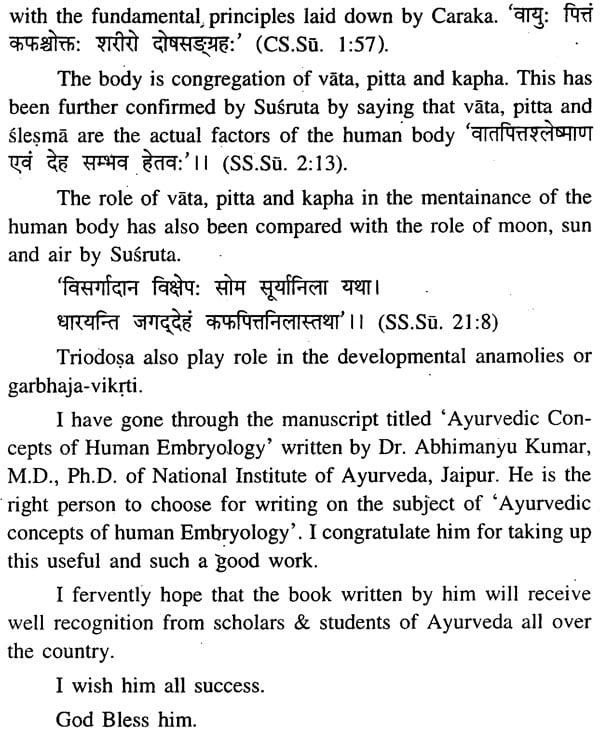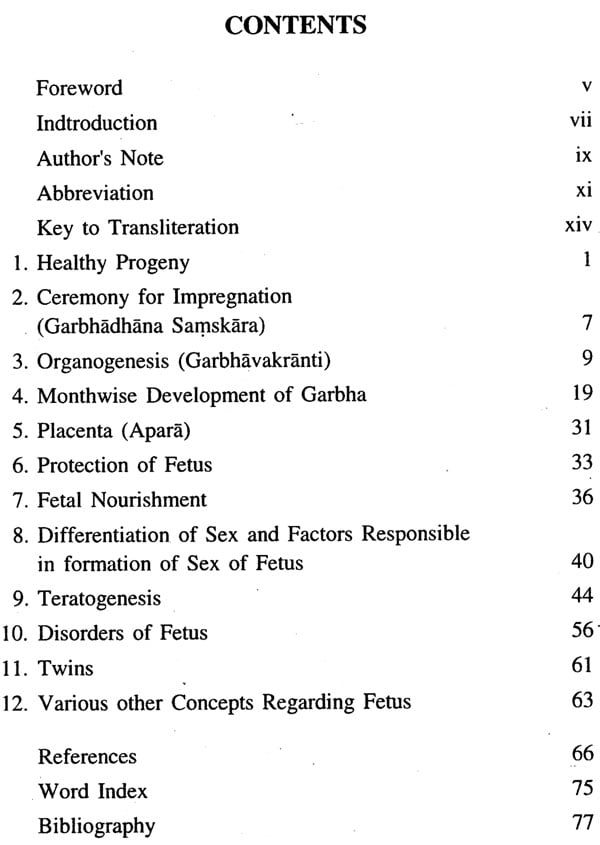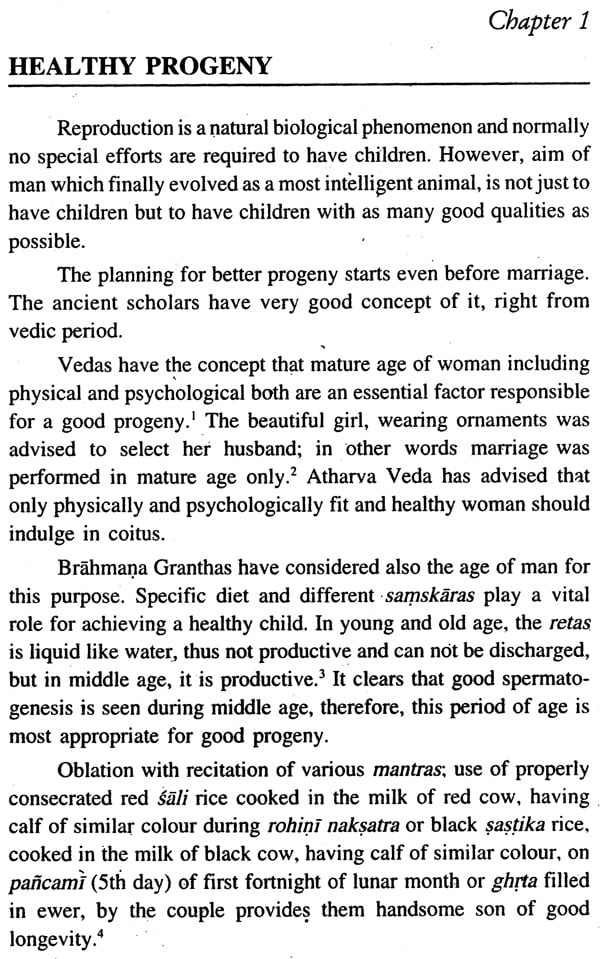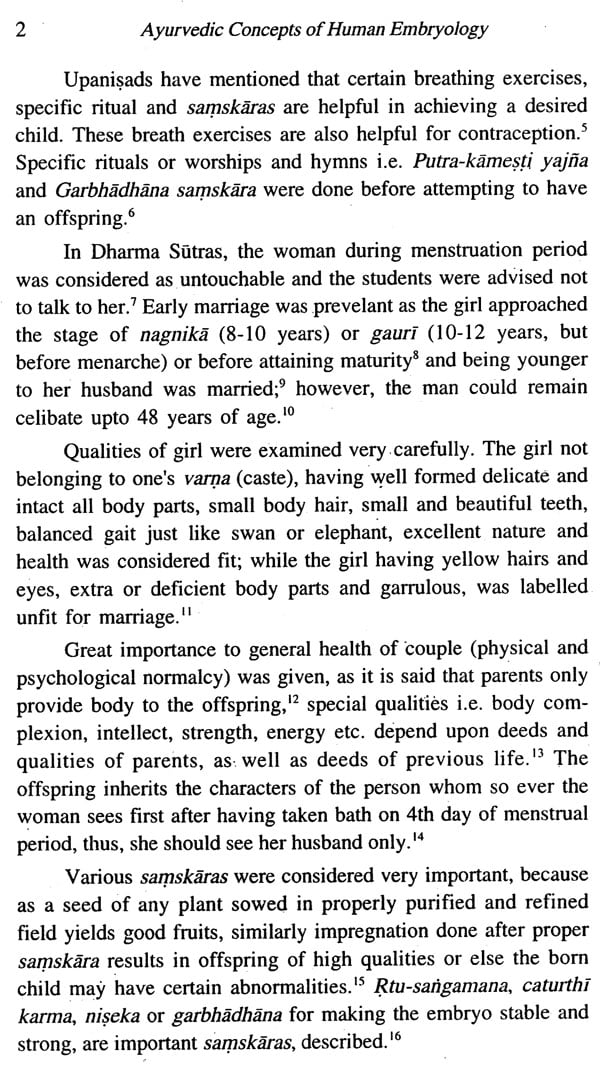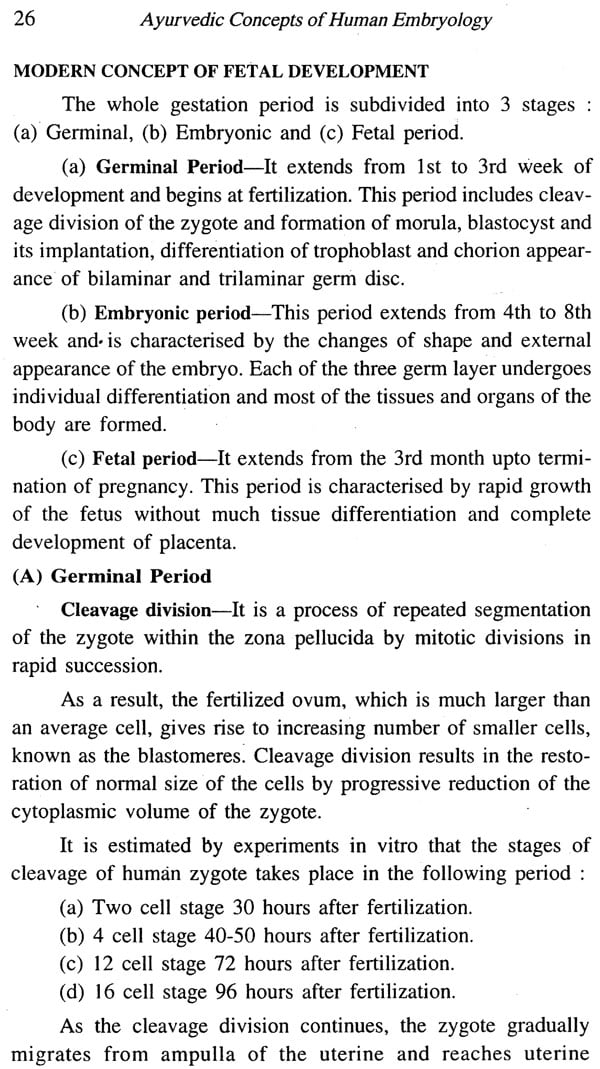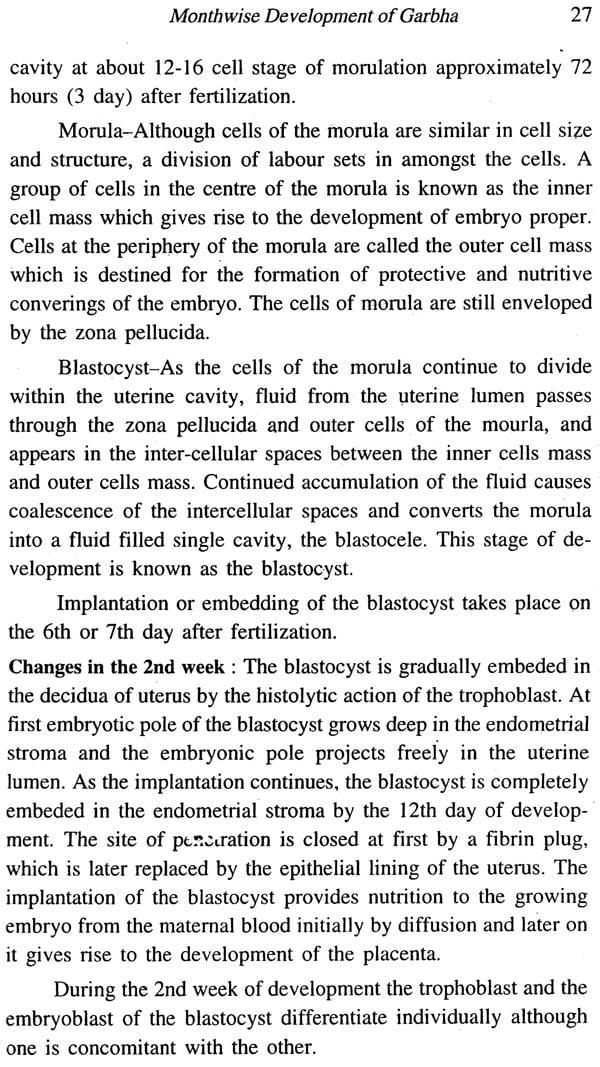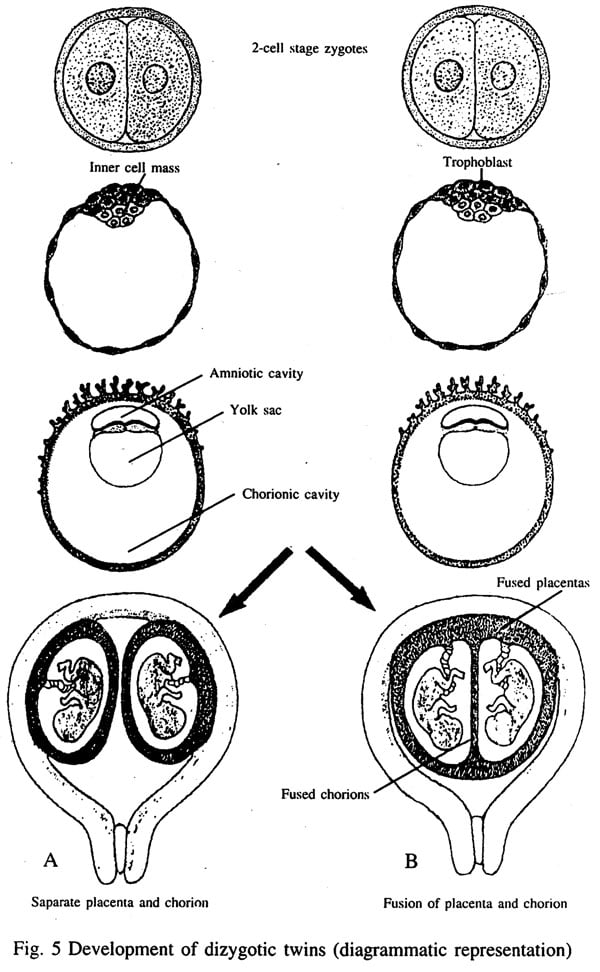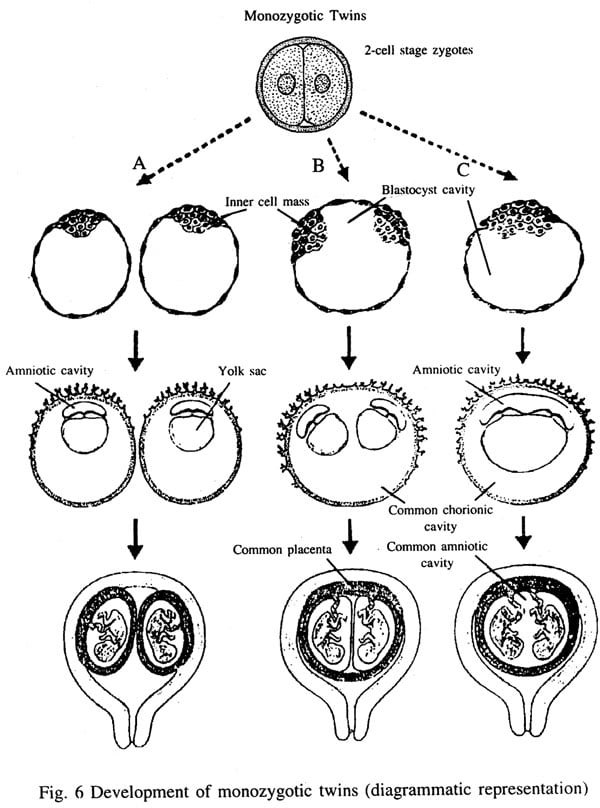
Ayurvedic Concepts of Human Embryology
Book Specification
| Item Code: | NAV543 |
| Author: | Abhimanyu Kumar |
| Publisher: | Chaukhamba Sanskrit Pratishthan |
| Language: | English |
| Edition: | 2017 |
| ISBN: | 9788170841715 |
| Pages: | 96 (6 B/W Illustrations) |
| Cover: | PAPERBACK |
| Other Details | 8.50 X 6.00 inch |
| Weight | 150 gm |
Book Description
Mother nature has provided the bestow of reproduction to all living beings, enabling them to preserve their species. Human being, the most evolved creature is fully aware of the better progeny. This fact is not true for today only. As refer-ences available in our ancient texts clearly indicate towards its importance. In ancient period medical study was not limited to only it's disease and treatment aspect. Allied branches were also given equal importance. It was the matter of curiosity for them to know about the mystery of reproduction, ultimately motivating them to explore the related secrets. Result of their efforts was presented well in ancient Ayurvedic texts. We could get sufficient references regarding the fetal develop-ment. The references of the subject which were scattered in the Ayurvedic texts are recapitulated and presented before the seeker's of Ayurveda, in the form of this book. Explanations of the subject in the light of modern scientific knowledge are being incorporated. Description of teratogenecity is an extra feature of the book.
Ayurveda owes much to the tradition of Atharva Veda, thus is called its upaveda. With the advent of scientific spirit, the basic concepts about physiopathologies founded earlier were developed further and crystallized during the period of sarnhitas of Caraka and Sugruta, which represent the medical and surgical school respectively, in these books rationalization over magical approach of vedic tradition is quite obvious.
From the very beginning Ayurveda has been an integral part and parcel of Indian culture and is mixed up in entire Indian literatures. Even the documents pertaining to sociology, religion, culture and general literature considered as non medical contain valuable information about theory and practices of Ayurveda. Therefore if one attempts to study any particular branch/topic of Ayurveda, it becomes imperative to study besides, Ayurvedic literature, other non medical literature also critically, to extract out theories and practices of medicine referred therein, which indicate their prevalance and popular impact. This aspect is more important for study of subject related to achievement of conception as well as embryology, because marriage and reproduction were considered even socioreligeous obligations to be fulfilled by individuals, naturally scientists of every walk of life tried to contribute their might to have a normal healthy progeny with long active and productive life.
Though Ayurveda is divided in eight branches or specialities for practical application, yet seperate books on all these specialities are not available. Caraka Sarnhita the basic/primary source book of medical stream describes mainly kayacikitsa, rasdyana and vajikarana, while Sugruta Sarnhita—the book of surgical stream deals mainly with galya (surgery) and galakya (ophthalmology and otolaryngology); comparatively short/summarized mention of agadatantra (toxicology) and a bit detailed description of kaumarabhrtya (obstetrics, gynecology, embryology, neonatology and pediatrics) is also seen in these very books. Though Kasyapa Samhita is a book on kaumarabhrtya, yet, due to availability of just of fraction (less than 1/3rd), it does not provide practicable knowledge, and the requisite subject has to be extracted from CS, SS or other classics. Probably due to prevalence of tantrika method of treatment, branch of bhatavidya was dealt by these experts and the Ayurvedic classics have given just a passing reference. In all these classics subject of any particular speciality or topic is scattered through out the text, not confined to specific section or chapters.
Education of Ayurveda has evidenced a sea change in twentieth century specially in last three decades after the establishment of CCIM by the act of Parliament. To fulfill the expectations and aspirations of society, to be in tune with the education of medicine (modern) and also to impart practically applicable teaching and training, not only eight specializations envisaged earlier but more than double the number with further subdivisions are being incorporated in curriculum of undergraduate and postgraduate teaching of Ayurveda.
Effective practical teaching can not be done without books of high standard. Though experts in the fields are writing books, yet wast gap exists between demand and supply. Dr. Abhimanyu's this book will postively fill this gap in the field of embryology. In this book the author has extracted relevant material from vedas, upanisads, grhyasfitras, brahmana granthas, smrtis, dharmasutras, Jain & Buddha literature also alongwith Ayurvedic classics of ancient period, because without references from other sources than Ayurveda embryology can not be under-stood in its entirety. To be in tune and conformity of trend of medical education and also to make the subject intelligible entire subject is presented under twelve chapters. Scientific explanation with comprehensive and comparative description of modern medicine make the subject simple, unequivocal and acceptable. The book is very useful to teachers, toughts, research workers and planners all alike. I wish and hope that in days to come Dr. Abhimanyu will continue to serve goddess Sarasvati and Ayurveda with more and more books on the subject of Kaumarabhrtya.
**Contents and Sample Pages**

